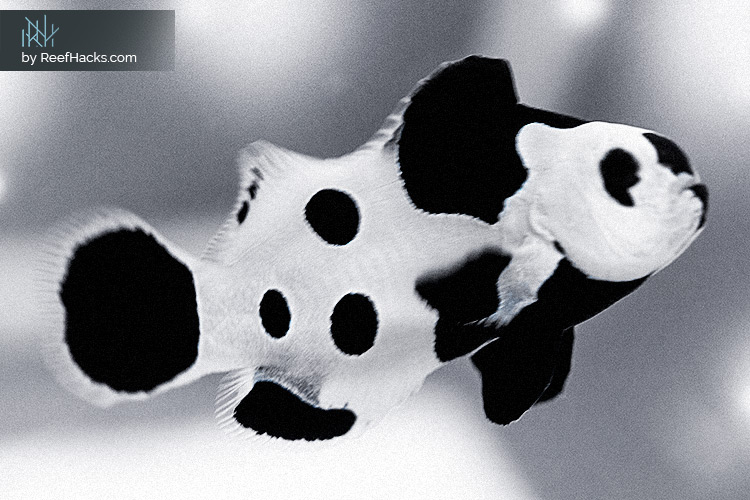There’s a dichotomy in the reefing community.
We want to protect natural coral reefs environments. On the other hand, we desire brilliant, unique and rare tank inhabitants. This, my dear reefer, is the problem.
Regardless of why you began this watery adventure, the shared core among all reef aquarists is our love of the mysterious tropical world. The vibrant colors and delicate fabric of marine life have led to one of the most popular hobbies in the United States.

Author:
As a lifelong aquarist, Yuliya has an endless curiosity about our underwater universe. After graduating with a bachelor’s in Environmental Engineering, she transformed her passion into a successful career. While working at the Institute of Environmental Protection in Moscow, her passion for saltwater and reef aquariums only increased. Moving to the United States in 2013, Yuliya embarked on another impactful journey by sharing her unprecedented experience for all aquarium hobbyists ... Read More.
Unfortunately, the quest to replicate the brilliance of natural reef ecosystems in your home or office aquarium may be adding to the growing reef crisis.
When you buy fish and coral to recreate a tropical paradise, you may also be actively participating in the destruction of what you adore most: natural reefs.
Blinded by Beauty and Desire - The Impact of Wild Harvesting.
One of the founding principles of Reef Hacks is sustainability through knowledge. While nearly all reefers want to avoid activities that harm natural reefs, so many unknowingly buy into the darker side of our beloved hobby.
The aquarium trade has been blamed by conservationists and environmental organizations for adding to the destruction of these endangered habitats. From collection practices to pollution, this profitable industry operated under the radar for many years.
So what’s the big deal? If coral reefs are endangered, isn’t it good to save species by plucking them from the wild?
Absolutely not.
In the wild, coral reefs are the epicenter of oceanic life. As these vital hubs diminish, via coral bleaching or unregulated harvesting, an unsavory chain reaction spreads throughout the world’s oceans.
So how do you stop aiding this harmful practice? Is it possible to fill your saltwater tank with brilliant species without buying into a system of destruction?
Yes.
Okay, let me expand upon that. Yes, it’s possible, but only if you know the right supplier. Luckily for you, me and the world’s reef ecosystems, one of the most sustainable, environmentally conscious fish vendors is only a few clicks away.
Sea & Reef Aquaculture - Branding Brilliance and Sustainability.
In the realm of saltwater fish trade, few companies demonstrate the essence of responsible farming to such a degree as Sea & Reef Aquaculture.
Founded by Soren Hansen, who happens to also be a marine biologist, Sea & Reef set out to accomplish two main goals:
- Provide a sustainable, eco-friendly and reputable supply chain for aquarists.
- Establish industry standards for future fisheries that promote the rare beauty of coral reef inhabitants without damaging natural reefs.
Since they opened shop in 2003, they’ve done just that. Not only is this a stellar company to purchase from (I’ll get to my experience momentarily), but they provide a viable solution in an industry overflowing with unscrupulous suppliers.
Over the years, I’ve personally dealt with dozens of suppliers who proudly bragged about their so-called sustainability practices. Yet, as with many businesses in almost every industry, most simply talked a big game, and eventually the truth came out about their not-so-stellar practices.
Sea & Reef is different.
Soren created a business that not only addresses the dichotomy of modern reefing, but provides a solution that’s actually better than the alternative. While responsible wild harvesting exists, the problem with this practice isn’t just about damaging natural reefs.
Fact of the matter is wild caught ornamental fish aren’t suitable for aquarium living.
Even if you don’t care about natural reefs, which hopefully isn’t the case, you do care about your financial investment. Wild harvested fish are notoriously difficult to maintain. Plucking a fish from its native home and plunging it into an artificial reef tank isn’t without complications.
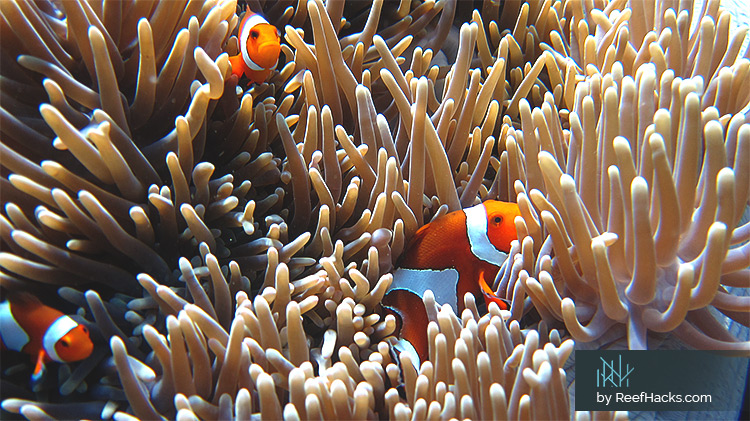
The problem with wild harvested fish is…
Think the best way to capture the essence of natural reefs is to use wild caught fish? You better think again.
Here’s only a few issues you’ll face:
- Short Lifespan - Wild harvested reef fish die faster. It’s as simple as that. Not only is it impossible to determine their age upon capture, but the stress of relocating from the wild to your living room isn’t exactly life-prolonging. Along with the emotional response of dealing with dead fish, why would you waste your money? Clownfish, for example, can live up to 30 years if they were born and raised in captivity.
- Aggressive Behavior - Instincts run deep in all marine life, but putting a wild creature into the compact boundaries of an aquarium is asking for trouble. Have you ever tried putting wild harvested percula clownfish in the same tank? If not, here’s some advice: DON’T. Wild harvested fish are much more aggressive toward other tank inhabitants, which is not only frustrating, but also costly (i.e., having to buy new fish because the wild fish went on a killing rampage).
- Health Risks - Ever put an improperly quarantined live rock, coral or fish in your tank? If so, then you’re aware how challenging it can be to restore homeostasis to the system. Wild harvested fish can introduce serious diseases and parasites into your carefully constructed microcosm. I don’t have to tell you how problematic this can be for other species.
- Costly Accidents - Each of the aforementioned complications equate to this final issue: cost. Financially speaking, the risks associated with wild harvested fish are enough to sway even the most diehard “natural reef” hobbyist. From constantly having to buy new fish to the potential system overhaul due to a deadly disease or parasite swarm, why risk it?
Now that we’ve touched on the dangers of wild harvested fish, why did I choose Sea & Reef Aquaculture? I think the best way to convey my excitement with this company is to share my personal experience.
Sea & Reef Ordering Process - My Experience.
Let me start by saying Sea & Reef knows what they’re doing. While no company is perfect, their ordering process and personal attention is rare in our industry. Heck, it’s rare in almost any industry.
For the sake of transparency, here’s a little background:
I’ve known about Sea & Reef, and the strides they’ve made within the aquarium aquaculture trade, for many years. However, I’ve never ordered from them until now. Needless to say, I was a little more than excited.
And let me tell you, my excitement was met and exceeded from the get-go.
Placing the Order - Easy, Efficient and Entertaining.
Unlike other suppliers, which are relatively hands-off during the ordering process, Soren took a hands-on approach. I had a rough idea of the type of fish I wanted, so in a brief and enjoyable conversation, I tried to explain my needs. While Sea & Reef has a WYSIWYG option, which allows you to specifically select fish, I didn’t choose this option. I decided to let Soren and his team make the final selection.
After our initial discussion, Soren weaved his watery magic and selected a total of six fish. Of course, if I wanted more control over my selection, that’s also an option. This is what I appreciated most about my initial exposure to Sea & Reef. Soren and his team believe in the synergy of satisfying customers. When a buyer is pleased, they’re likely to remain a customer. This not only boosts their business, but helps solidify the value of aquaculture fish farming over wild harvesting.
So what fish did Soren choose? Here’s the list:
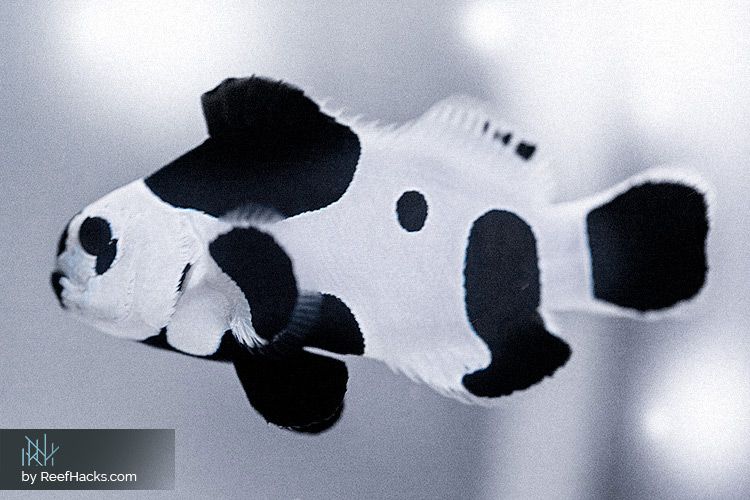
- Black Storm Clownfish - If a fish species could be trending, it’d be the Black Storm Clownfish. This delightful species is extremely popular among reefers and demand is shockingly high. Obviously, I was tickled to see that Soren had chosen a pair as part of my order. Instead of splashes of color, the Black Storm is an all black-and-white design with straight and curvy black patterns over a beautifully pure white color.
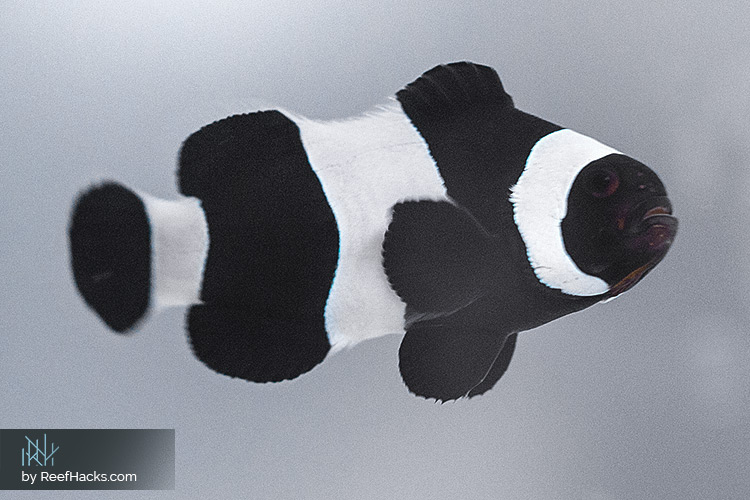
- Wide Bar Black Clownfish - Soren chose two Wide Bar Black Clownfish for my order, and I couldn’t be happier with this specific selection. As its name suggests, this species features large bars of white and black. As the fish ages, the hallmark black coloration deepens, which gives this fish a striking appearance.
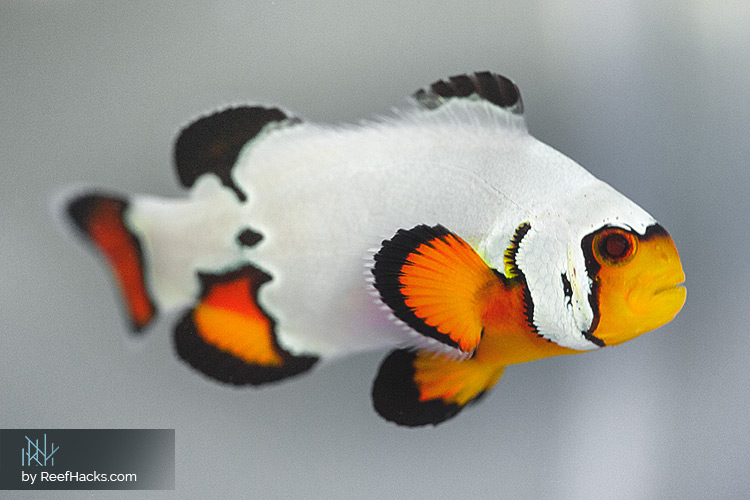
- Ultra Black Ice Clownfish - I enjoy this species for many reasons, but mainly it’s the unique aesthetics offered by this designer fish. With an orange-brown body highlighted by irregular patterns and a brilliant white body, I couldn’t have been more pleased with this choice. To make it better, Soren chose a pair of this unique clownfish.
Farm-to-Tank: Packaging and Shipping Highlights.
I know what some of you are thinking, “If the fish were alive upon arrival, then their shipping quality is fine.”
If you thought this, then you’re basically right. When it comes to shipping fish, there’s not too much variation. Unlike coral frags, which require unique and specific packaging/shipping, sending fish through the mail is relatively straightforward.
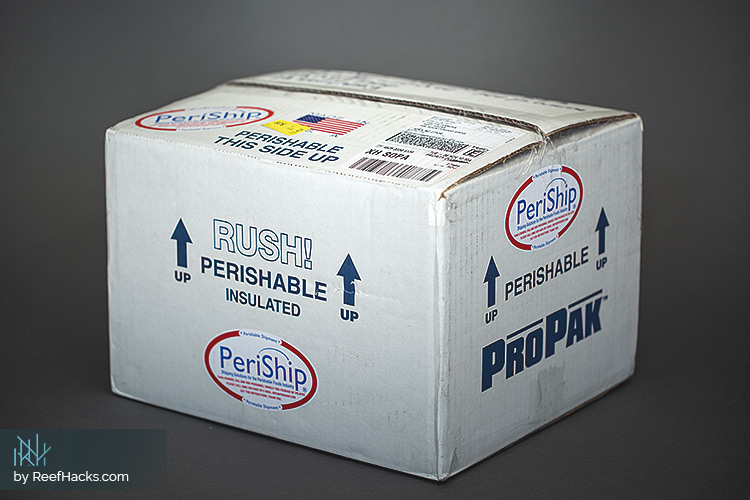
But what I can report is positive, surprisingly.
Why surprisingly? Unfortunately, when my order was processed and sent out for overnight delivery, Hurricane Florence decided to pay our lovely state of North Carolina a visit. Needless to say, the shipment was delayed.
Typically, this is when most companies would sympathize with your plight, but either place blame on the carrier or give you the runaround.
Sea & Reef did neither. Actually, they moved into action before I fully knew there was an issue.
Several hours after the predetermined delivery time passed, and no shipment was at my door, Sea & Reef customer support actually called me! A very pleasant person informed me of the delay and that they’re personally following-up with FedEx about my package. If this isn’t exceptional customer service, I don’t know what is.
Unfortunately, there’s not much FedEx can do about a hurricane.
Fast-forward two days later. An apologetic delivery man handed me a box with what I assumed was six dead fish.
Shockingly, all six fish were alive and well.
None of the packages were damaged or leaking, and to my amazement, the fish were ready to be quarantined.
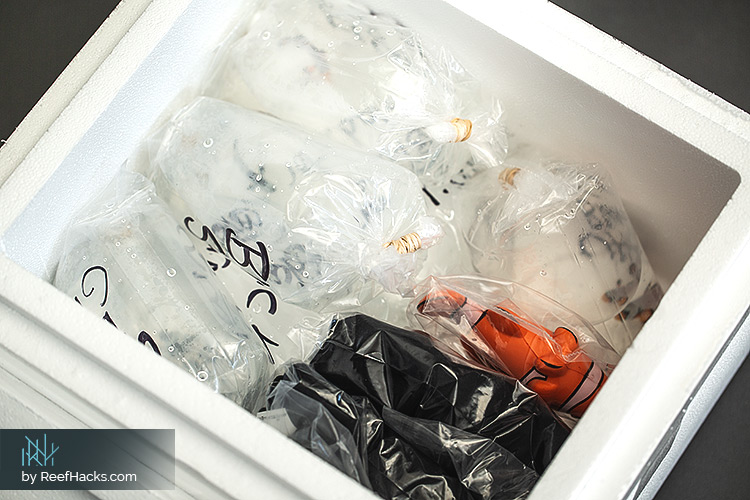
Enjoying a Sustainable Life - Final Thoughts About Sea & Reef.
After staring at the beautifully designed clownfish happily swimming in their travel bags for longer than you’d think, I began the quarantine process.
But wait…doesn’t Sea & Reef say quarantining isn’t required?
Well, yes, but that’s never a reason to skip this essential step. One of the biggest advertising points for Sea & Reef is their parasite-free fish, but in my opinion, most fish carry parasites. It’s possible for a fish to have harmful parasites, but its immune system controls visible symptoms until their environment changes. Not only is relocating a stressful experience, which can lower fish immune systems, but their new environment can pose a health risk. Ever noticed white poop after introducing a new fish? That, my dear reefer, is likely parasites.
I’m not suggesting Sea & Reef fish have parasites, but I am saying it, at least sometimes, pays to be on the cautionary side of life.
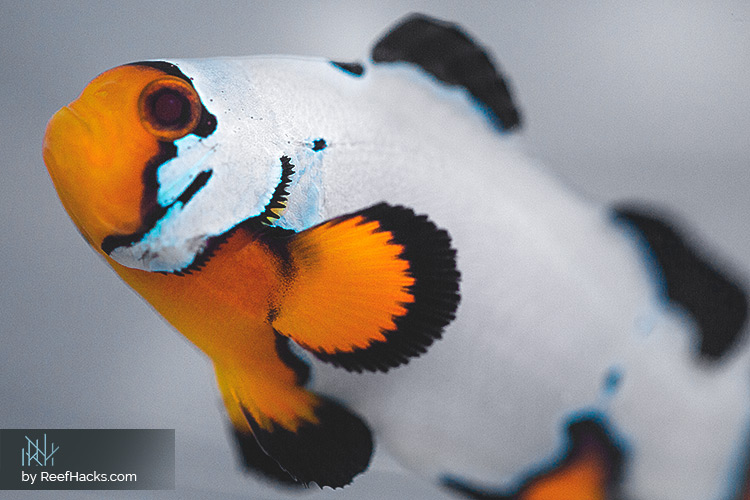
Here’s my experience with their fish:
- After two hours in the quarantine tank, the fish were happily swimming and getting along great. They became very active, which meant - hungry.
- All fish were 100% healthy and none featured signs or symptoms of having parasites.
- I’m proud to report after the two week quarantine, each of the six fish were completely free of parasites or disease.
In closing, I want to briefly discuss my feeding routine and recommendations. Here’s what I’m currently feeding my clownfishes:
- New Life Spectrum Thera A Regular Formula soaked in Brightwell Aquatics AminOmega 3/6 HUFA Supplement.
- Reef Nutrition - TDO Chroma BOOST (I’m using the C1 size).
- Sustainable Aquatics - Dry Hatchery Diet
- Rod's Food Original Blend.
Sea & Reef Aquaculture - Our #1 Choice for Sustainability, Service and Style.
Dealing with Sea & Reef Aquaculture was one of those rare shopping experiences. At the end of it all, I felt good knowing my brilliant new inhabitants came from a company who protects the environment with as much fervency as they give each customer.
Ultimately, if you’re looking for a quality supplier who’s just as excited as you are to fill your tank with beautiful fish, the choice is clear: Sea & Reef.
by Yuliya Ivanova for ReefHacks.

